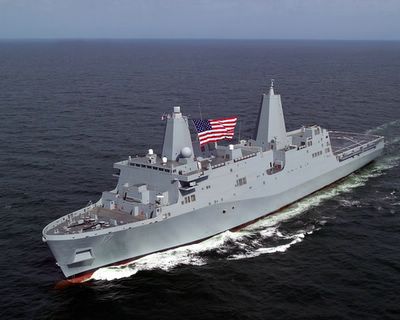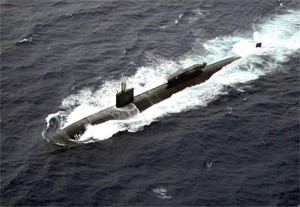Class Struggle
Crossposted by LL at "Hunderds of Fathoms".When it comes to funding new classes of ships the US Navy is in a difficult position these days. Greater per unit procurement costs, budget constraints, mission requirements and the need to maintain a shipbuilding industrial base are all factors that must be taken into account when embarking on creating a new class of ship. In many cases the design and development of a new class of ship has a lead time of a decade or more of engineering work before construction starts. During that time technology advances and even operational requirements can change.
Here's a couple of examples of how a ship's design, development and construction process can go poorly or pretty well.
The Navy's newest class of amphibious ships is getting bad reviews by Navy inspectors in recent months. The USS San Antonio is a $1.2 billion helicopter and troop carrier schedule to join the fleet this fall.

USS San Antonio LPD17 (Source: US Navy)
The HamptonRoads.com article titled "Problems on new ship a bad sign, analyst warns" states:
The ''poor construction and craftsmanship'' Navy inspectors say they found last month aboard a new amphibious ship could be an ominous sign for the service and the U.S. shipbuilding industry as they embark on a host of other ship programs, a veteran naval analyst warned Wednesday.
Additionally there's this statement:
Inspectors said they found such deficiencies as hazardous wiring, uninstalled ventilation and a crash-prone engineering control system. Though the Navy expects to take possession of the ship in August, the inspectors said the San Antonio is not ready for its crew to come aboard.
That's troubling, the ship is not ready for the crew to come aboard? I know what they really mean is become operational, she's already manned, but the Navy has a problem here and it sounds like another poorly run program and problems with the Shipbuilder.
Joseph F. Yurso a former commander of the Portsmouth Naval Shipyard in Kittery, Maine is quoted in the above article as saying "A nuclear-powered submarine or aircraft carrier receiving its first exam from the Board of Inspection and Survey generally gets fairly high marks". But then goes on to argue that amphibious ships always seem to be at the end of a food chain. What I can't understand is the price tag, $1.2 Billion for a conventionally powered (diesel) ship that looks like a big sub tender, how is that the end of the food chain?
But Mr. Yurso brings up a good point, at least in recent history, that new class submarine programs seem to have the good record. In contrast take the progress of the new Virginia Class SSN as reported in The New London Day back in June:
The Groton-based USS Virginia could deploy later this year, more than a year ahead of what would be a typical schedule, becoming the first nuclear submarine to go on an official mission before a year of testing and a year of repair, top Navy officials said this week.

Virginia Class Submarine (Source: US Navy)
A few of my fellow bubbleheads have commented on the USS Virginia's program success back then, such as here and here as well as comparing the Virginia class to the DDX program here or the LCS program here.
This former EB yardbird and Submariner may be a little bias but I think the submarines are money well spent in comparison to some of the Navy's new surface ship classes.


1 Comments:
PBS-
Point well taken, by pushing the envelop with the Virginia class the Navy may be changing success into failure, especially with the lead unit in the class. My experience is that PSA is a necessity even for follow on units. I was on 6th T-hull in new construction (delivered ahead of schedule) and even though my division had no problems we did need a PSA to fix other yardbird screwups.
My larger point was to show contrast between the Surface Navy’s shipbuilding problems and Submarines. This blog and, to some extent our readers, concentrate on submarine topics and therefore problems within our community. By showing the problems within a different Navy community and shipbuilder we can see that, although we can do things better, we do a pretty good job overall.
Post a Comment
<< Home